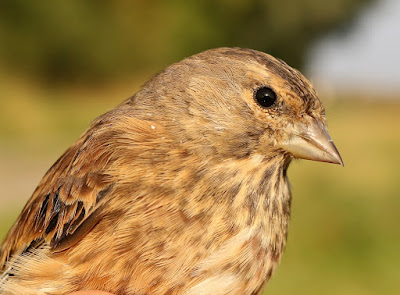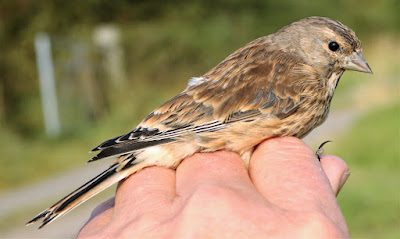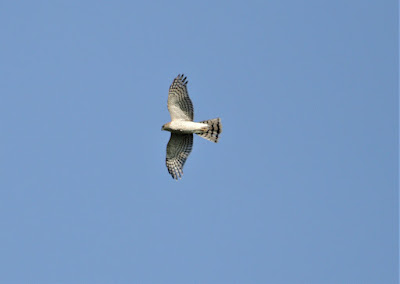It seems my precious Linnets are not as popular as the newest guide book about birds. With 286 views and still counting, my review of Europe's Birds on 4 October blew away "Those Linnets Again" of 6 October, the latter post attracting a miserly 44 viewers to Another Bird Blog’s tales.
As far as I’m concerned the more Linaria cannabina the better so on Friday I made for Cockerham armed with a couple of mist nets, a pair of bins and a high dose of expectation. There was coffee, a slice of malt loaf and a crispy apple for second breakfast.
It wasn’t so bad despite the cold morning air leading to expired coffee and food long gone by 0930. After near zero wind at the 0700 start, a breeze in the region of 10-12mph took over and began to make the net visible to the Linnets, a species that is wary at the best of times. Here in Fylde of coastal Lancashire near enough every field is as flat as a pancake with no let up from wind coming from any direction.
At 1030 I packed in after a pretty good catch of 14 new Linnets (11 first years, 3 adults), a Wren and a migrant Chiffchaff. Had the wind not blown me away early there was a chance of 20 or more Linnets.
Each Linnet takes about 25 seconds to process, a concentrated but brief routine that leaves ample in-between time for looking, listening and watching.
Birds other than the ones ringed manifested as 200 Linnet, 12 Greenfinch, 4 Pied Wagtail, 1 Buzzard, 1 Kestrel, 1 Sparrowhawk, 1 Grey Heron, 4 Magpie, 2 Robin, 2 Reed Bunting, 4 Skylark, 8 Stock Dove.
Regular flights of Pink-footed Geese overhead amounted to over 1000 together with more distant sounds from geese that were not counted.
Short and sweet I hope. Back soon with more news, views and pictures at Another Bird Blog.

























































































